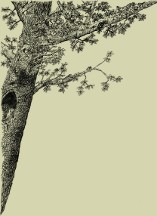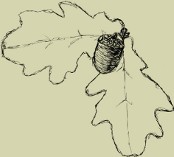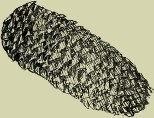42 41 40 39 38 37 36 35 34 33 32 31 30 29 28 27 26 25 24 23 22 21 20 19 18 17 16 15 14 13 12 11 10 9 8 7 6 5 4 3 2 1
Zeszyt 17 (1986)
The warty layer occurs on the S layer of the secondary wall of spring and summer growth tracheids of stem, branches and roots of Abies alba M. The warts can assume various shape and wart diameter ranges from 50 to 50 nm. The warty layer should be one of the taxonomic features of the Abies alba M. wood.
Relation between holocellulose and lignin content of wood degraded by chemical and biological agents and its calorific value has been determined. This dependence is expressed in form of a straight line equation passing through two points. Results of calculations of lignin and holocellulose contents base on heat of combustion measurements are to a great extent similar to the results of their determinations by the chemical way.
The effect of the kind and time of pine wood storage on its extractives content, on the yield and composition of tall oil and the yield of sulphate turpentine was investigated. It was stated that wood storage results in a decrease of extractives amounting to about 4% per month for logs and twice as much for chips. The decrease in the yield of tall oil amounts during first two months of wood storage to 20% per month for logs and 35% for chips. The loss in turpentine after one month of chip storage amounts to 50%, and after four months its yield is nearing to zero.
The storage of wood causes negative changes in the composition of tall oil: the part of fatty acids decreases while the content of unsaponificated matters increases. The above changes are greater when processing wood stored in chips than the same wood stored in logs.
The aim of the presented investigation was to disclose the main technological factors influencing the microdestruction of wood, which does occur in train of plastic densifying of wood. Results of the initial analysis allowed to represent the investigated by-effects of a transverse compression of wood with an index Z of its relative deformation. Experimental investigations have yielded results disclosing the dependence of the Z-index on the main technological parameters of densifying birch wood with radial compression. With the optimum numerical of 30% moisture content, 20% plasticizer (urea) content, 0.2 mm/min. compression speed and 100°C pressing temperature a minimum microdestruction index — ranging from 3.5 up to 10% — may by achieved in birch wood compressed to 50% of its initial thickness.
Investigations were carried out on the hydrogen fluoride emission from wood treated with the F-8 preservative, containing acid potassium fluoride. This preservative has been newly invented in the Agricultural University of Warsaw. Wood treated with this preservative did not evaporate measurable quantities of hydrogen fluoride in the testing chamber as well as in a closed room. No glass corrosion has been noted, too.
Three strains of Armillariella mellea (Vahl. ex Fr.) Karst. fungus were used in the preparation of submerged cultures on two variants of substrate with the addition of Scots pine (Pinus sylvestris L.) needles as a natural component rich in biologically active nutritive substances. The first variant was prepared with the addition of 5% needles which volatile oils were distilled of while the second one, also without volatiles, containing 5% needles was enriched with 3% of urea (NH2CONH2.
Both these variants of substrates prove dto be advantageous for obtaining complexes of cellulolytic enzymes from all three strains of investigated fungus. Better results were obtained using first variant of substrate because nearly double values of endo- and exo-1.4-β glucanases and about 50% higher specific activities were found in comparison with values characteristic to the second variant. On the other hand, the second variant was beneficial in growth of mycelium biomass and increment of nitrogen content.
It is possible to obtain about 260,000 tons of pine needles annually in Poland in the process of whole tree chipping. Pine needles are used in several countries, particularly in the Soviet Union, in the production of vitamin enriched seed meal. Pine needles, along with the content of very valuable components such as: saccharides, fats, carotene and vitamin C are relatively poor in nitrogen compounds.
Investigations carried out were aimed at enrichment of needles with the addition of urea as a source of nitrogen. 1, 3 and 5% of urea was added in relation to dry substance of needles under pressure of 75.0 MPa maintained for 150 seconds at temperature of 18 or 100°C. Small briquets were obtained this way and about 600% increase of general nitrogen and about 390% organically fixed nitrogen was found.















 Pobierz PDF
Pobierz PDF